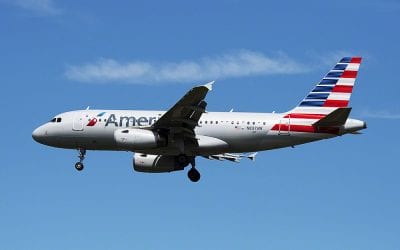For decades, the lack of logic in airfares has driven savvy travelers to play all sorts of games — from throwing away a return ticket to getting off a plane at a connecting city for a less expensive fare.
But advances in technology, while perhaps making it easier to find cheap fares by playing games, also make it harder for travelers to get away with those games. Airlines can now track unused tickets.
Almost all carriers cancel remaining segments if passengers miss a flight, and some airlines already bill travel agents if passengers don’t use all of their ticket. Others reportedly go after frequent flier miles. And British Airways is, in fact, actually threatening to charge travelers directly for circumventing its rules.
In some cases, it’s not a question of doing something against airline rules, but rather just deciding between two cities for either a departure or a destination, or considering adding another city to a round-trip.
And, in my experience, most travelers assume that departing from or returning to a smaller airport and connecting will cost more than just getting a nonstop. But that assumption is often wrong.
Witness two recent examples: I have two clients going to China from the San Francisco Bay Area for work, and their company covers business class tickets.
One client lives closer to Sacramento, but often drives to San Francisco. And the round-trip business class fare from San Francisco to Beijing on United nonstops is currently about $8,400. But starting and returning from Sacramento, connecting to and from the identical flights in San Francisco is only $7,400.
Another client making almost the same San Francisco to Beijing trip wanted to visit her parents in Seattle for Thanksgiving.
She wondered how much more it would cost to stop on the way home as opposed to doing a separate round-trip leaving the day after she returned. In her case, the nonstop fare from San Francisco was about $8,700. But connecting back through San Francisco to Seattle on the way back dropped the fare to about $7,500, including a coach flight back to San Francisco after the holiday.
There actually is a bit of logic to this apparent madness. United Airlines considers its nonstops to be worth a premium. Also, there is almost no competition for travelers who want a nonstop to Beijing from San Francisco. But those who want to connect from Sacramento can go via Los Angeles or Seattle. And there are even more options from Seattle itself.
All airline markets are different. In some cases — such as the hotly competitive transcontinental market between New York and Los Angeles or San Francisco — nonstops are less expensive, and flying to or from smaller nearby airports may double the fare.
In general, the best chances of saving money by adding a flight are when an airline’s hub is involved at one end, especially when that hub has limited competition.
For example, using economy class fares to Europe, Frankfurt is dominated by United-Lufthansa, so nonstops from major U.S. cities are expensive, whereas London has much more competition. So a traveler in, say, Santa Barbara, Calif., would save money by flying Santa Barbara to Frankfurt instead of driving to Los Angeles and flying from there. The same person going to London, however, would be better off making the drive to LAX for a nonstop.
Confused yet? The important thing is just to be aware of the craziness. Before booking a trip, check both the route you think is the easiest and least expensive and the one you’d want in a perfect world.
Who knows? You could save money and time.
Janice Hough is a California-based travel agent a travel blogger and a part-time comedy writer. A frequent flier herself, she’s been doing battle with airlines, hotels, and other travel companies for over three decades. Besides writing for Travelers United, Janice has a humor blog at Leftcoastsportsbabe.com (Warning, the political and sports humor therein does not represent the views of anyone but herself.)



